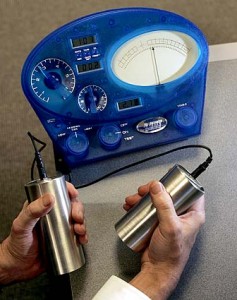Today’s Gateway features another in the continuing letter arguments over my now 9 day old op-ed. Hopefully every piece I write can stir this much discussion.
This piece comes from Sheila Kwasek:
I suppose there is really no nice way to say this, so I’ll just come out and say it: Ian Bushfield, in his article (re: “There’s no ‘God’ in Graduation,” 16 September), is being hypocritical.
I can understand that removal of the reference to God may be needed, since it’s true that many people don’t believe in God, and their beliefs should be respected as much as anyone else’s. Yet, while saying that keeping the reference to God is discriminatory, he freely bandies about such notions as religious people living “in fear” of a God, and referring to the religious aspects of the university’s history as its “dark-aged roots.” How can one be think [sic] he truly favours tolerance and equality when he can’t even show respect for religious beliefs?
He also shows very little understanding about the workings of Canadian society. Unlike America, we don’t have a “separation of church and state” as such, we have more of a notion that one religion should not be given preference or predominance in a public institution. Secularism is merely the simplest way to make sure no one religion is predominant in the public sphere.
Though this isn’t always the case in practice, as forcing secular ideals on everyone is surely no better than forcing religious ideals. Yet – as Bushfield’s outspoken disdain for religion shows – the beliefs and values of religious people are rarely given as much consideration as secular values.
Perhaps if Bushfield is concerned about equality, he should start with himself. He probably wouldn’t like the Bible reference, but I think Jesus’ advice stands in this case – “you need to take the plank out of your own eye before you can get the speck out of someone else’s.”
Sheila Kwasek
Arts II
Now this letter is interesting. Shelia agrees with my argument (somewhat), but likely was pissed at the rhetoric I used (remember, I wrote this for the Gateway, not the New York Times).
She calls me a hypocrite for claiming discrimination while disrespecting religion (note: tolerance and respect are not equivalent).
She claims Canada doesn’t have “separation of church and state” (we technically don’t have it in Canada), which I didn’t technically claim, but then admits that we “have more of a notion that one religion should not be given a preference or predominance in a public institution.” But I’m not sure what she thinks the difference between the two phrasings is.
She then seems to think “secular values” can be imposed upon religious people. And that religious values are given less consideration than secular values. I hope she realizes that secularism is not a religion, and there are in fact many secular religious people.
And as for “he probably wouldn’t like the Bible reference”, in fact, Sheila, there are many Bible references I do enjoy.

